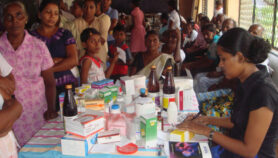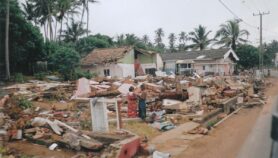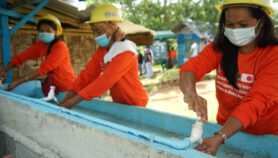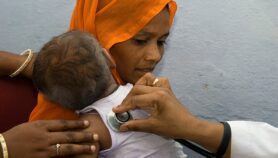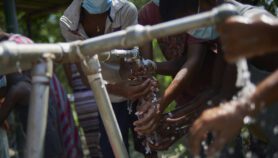By: Mike Ives
Send to a friend
The details you provide on this page will not be used to send unsolicited email, and will not be sold to a 3rd party. See privacy policy.
[HANOI] A new forecasting tool could give scientists a four-month head start in accurately predicting dengue fever outbreaks, a study claims.
Yien Ling Hii, lead author of the study and a researcher at Umeå University, Sweden, tells SciDev.Net that the tool could enable health officials to carry out public health campaigns on dengue much earlier than was previously possible.
The new model is based on data gathered in Singapore over an 11-year period, according to the study published in PLOS Neglected Tropical Diseases last month (29 November). In 2011, scientists used the model to accurately predict all five of Singapore’s dengue outbreaks four months in advance, thus enabling the authorities sufficient time to prepare.
Dengue fever, which is endemic in more than 100 countries, is a viral infection transmitted by several types of mosquito that affects 50 to 100 million people every year. Patients usually recover within two weeks, after suffering fever, rashes, muscle aches and other symptoms, although the infection also kills between 12,500 and 25,000 people each year.
Public health campaigns on the disease typically encourage residents to eliminate pools of standing water, where dengue-carrying mosquitoes can breed.
The ‘weather-based’ model is designed to enhance existing tools used by the Singaporean government. And it could also be adapted for use in other countries if unique local variables were incorporated, says Hii.
However, Sazaly Abu Bakar, director of the WHO’s Collaborating Centre for Arbovirus Reference and Research in Kuala Lumpur, Malaysia, says the 16-week forecast "seems a bit too long" to be accurate.
Another potential limitation is that the world’s least developed countries do not keep accurate climatological and meteorological data, making it impossible to make future dengue predictions based on past data, says Hasitha Tissera, an epidemiological consultant at Sri Lanka’s Ministry of Health.
Even if accurate data does exist, dengue remains a complex public health issue that consistently perplexes researchers, and involves virus mutations whose impacts depend on a range of human and environmental factors, Tissera says.
"You cannot generalise [about] it," he says. "From area to area, the temperature and rainfall may vary."
The study does admit that locally based dengue forecasts are generally only relevant for a specific area.
However, it also notes that widespread travel and trade across the Asia Pacific region mean that individual countries can no longer effectively limit dengue infections without wider regional cooperation.
The study also says that a regional "early warning" tool, pegged to weather anomalies like the El Niño/Southern Oscillation (a periodic warming cycle in the tropical Pacific Ocean), could help to complement national forecasting across the region.
References
doi:10.1371/journal.pntd.0001908 (2012)







